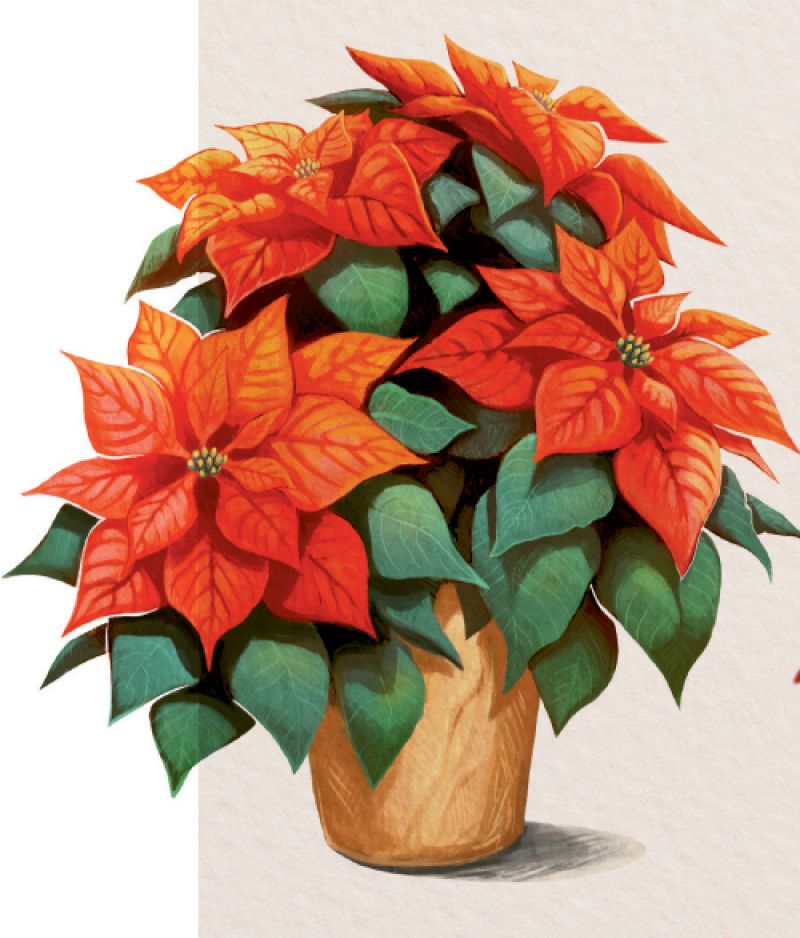
Fateful Date
December 12, the date of Joel Roberts Poinsett’s 1851 death, is Poinsettia Day. Coincidentally, in Mexico, the plant is used to celebrate the holy day Dia de la Virgen, which also falls on December 12.
First of All
The poinsettia is the top- selling potted plant in the U.S. and Canada, with most (about $60 million worth) sold in the six weeks before Christmas.
In the Red
When grown in a hothouse, the plant must be kept in complete darkness for 12-hour periods at least five days in a row to maximize its bright hue.
Legend Has It
The association with Christmas began in 16th-century Mexico, when an angel was said to have visited a poor girl who didn’t have a gift to offer for Christ’s birthday. He told her to gather weeds and place them in front of the church altar. When crimson blossoms sprouted from the plants, it was considered a miracle.
Biologically Speaking
The red “flowers” are actually leaves, called ”bracts,” and the real flowers are in the center of the plant—yellow blooms named ”cyathia.”
Myth Busted
Poinsettias are not poisonous. They were long believed to be because of an early-1900s article in a national newspaper that erroneously reported of a child dying from consuming the bitter leaves. In fact, an Ohio State University study showed that a 50-pound child would have to eat more than 1.25 pounds of the leaves to experience side effects.